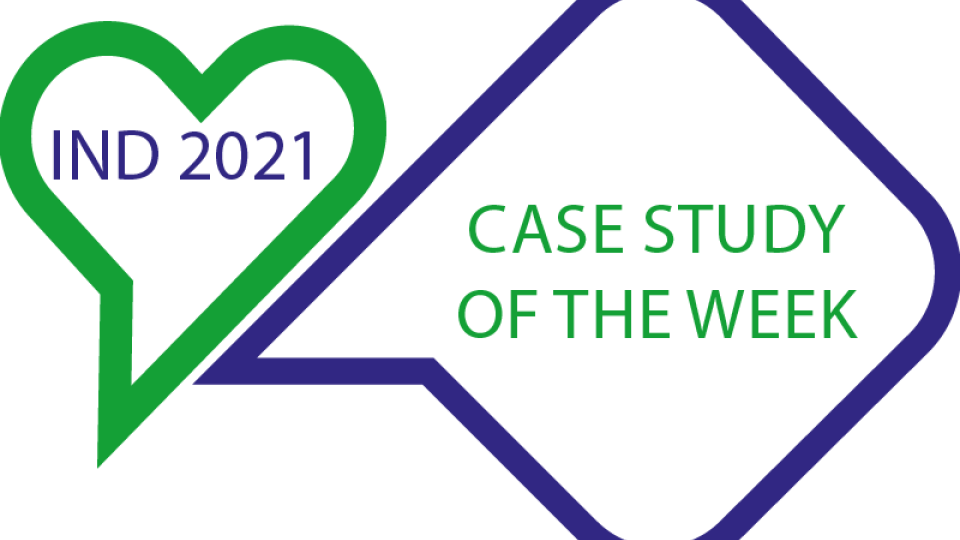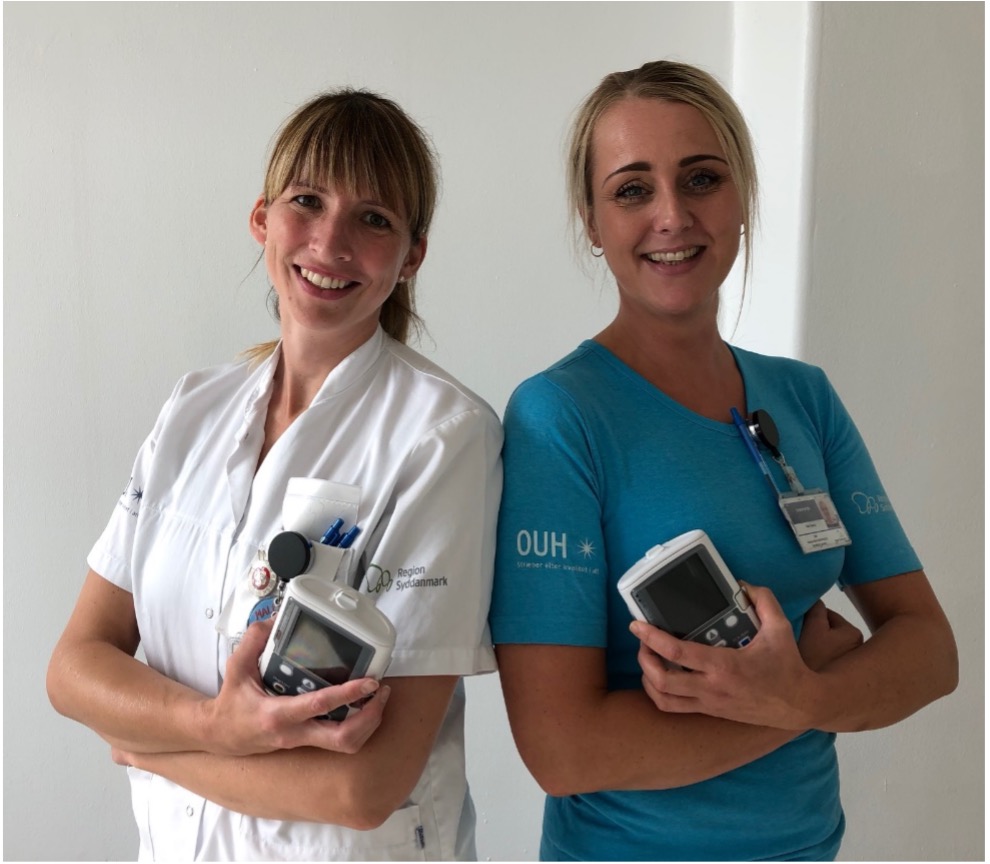The Joint Outpatient Clinic’s use of portable, programmable infusion pumps, Denmark

Contributors: Malene Kildemand, clinical nurse specialist and Sisse Skaarup, RN
In February 2020, Odense University hospital in Denmark opened a new ward called The Joint Outpatient Clinic. One of the tasks for the new ward was to be responsible for the implementation, of giving antibiotics through portable, programmable infusion pumps (PPP). When COVID-19 arrived, the implementation accelerated faster than planned.
The hospital management decided that more I.V treatments with antibiotics should be given through the PPP in order to free up more nursing time, which can be used where there is greater need. It can also free up more hospital beds, as the patient can finish the treatment at home. The home treatment may also increase the patients’ quality of life by spending time in their own homes instead of being hospitalized.
The PPP has already been in use for a longer period of time, for example in cancer treatment. With the arrival of more hospitalized patients suffering from COVID-19, the Joint Outpatient Clinic worked with the hospital pharmacy, which delivers pre-mixed antibiotics used in the PPP. Through teaching and guidance, the nurses at 10 different wards at Odense University Hospital have been trained to implement the PPPs. Some patients have also been educated to handle the PPP themselves. The training of the nurses and the patients makes the patients feel safe to get the treatment at home.
The use of the PPP inside and outside the hospital eliminates the time spent on mixing the medicine and connecting the patient to the infusion, freeing up the nurses’ time to care for COVID-19 patients. During the first seven months, 360 different patients were treated with antibiotics through the PPP. The Clinic has recently developed cooperation with the emergency room, whereby the patients can start I.V antibiotics immediately, before either being transferred to another ward or discharged to home treatment with the PPP.
To accommodate caring for the patients with home treatment through PPP, the unit is working with home care nurses in the local community, who have been guided to administrate the PPP in the patients’ homes, nursing homes and rehabilitation homes. During the first two months of this cooperation, nine patients were treated in their homes by the home care nurses over 23 days.
The nurses are assured that the patients feel safe and are satisfied when treated through the PPP. Through high compliance and security in the nursing staff and the patients in the use of PPP, more patients can be discharged from the hospital with antibiotics through PPP, which leads to an increased quality of life for the patient and cost savings.
For example, one patient had the opportunity to go on holiday in a cottage in Denmark. The nurses provided the medicine for a week and felt confident that the patient could handle the medicine and the PPP. The treating ward established contact with a hospital near to the cottage, who could assist the patient in case of any problems, such as if the I.V access had gone subcutaneous.
The future plan is that PPP will be implemented throughout the hospital. Wards will be able to administer the use of PPP themselves. The goal is more home treatments, therefore more available hospital beds and nursing resources, and an increased quality of life for the patients.
